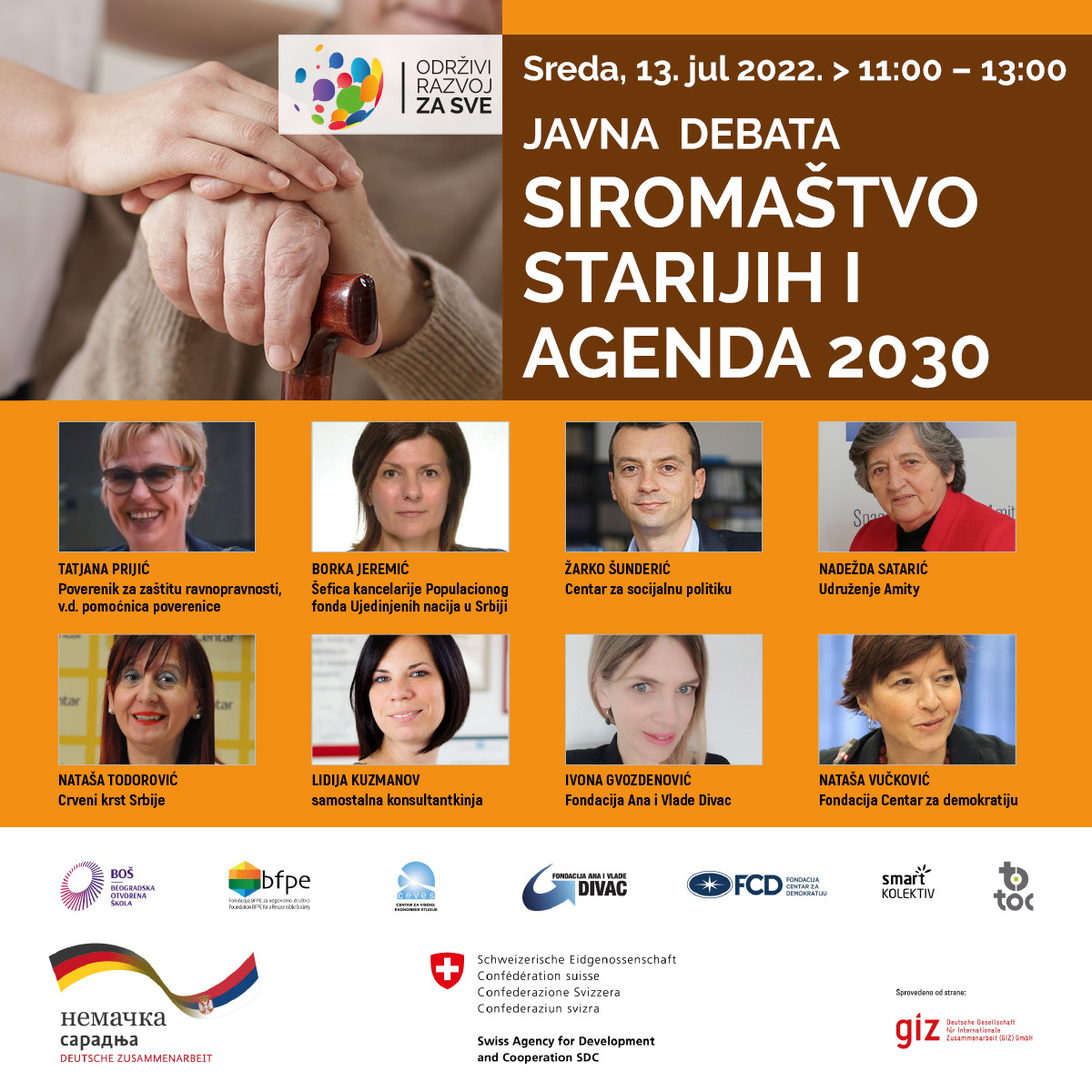Public debate “Poverty of older persons and Agenda 2030”

At the invitation of the Center for Democracy Foundation, a representative of the Red Cross of Serbia on July 13, 2022 participated in a public debate entitled “Poverty of older persons and Agenda 2030”. The public debate was organized within the Platform “Sustainable Development for All”.
Nataša Todorović from the Red Cross of Serbia pointed out that the poverty of older persons has two main forms that must be kept in mind when investigating this phenomenon and when thinking about public policies that should reduce the risk of poverty for this population.
First of all, poverty in older age is often the result of accumulated barriers and risks that accompanied the older person during previous life stages. On the one hand, we can talk here about people who were employed in the informal economy and had low incomes during their working life, so they have no savings and no pension, but also about people who were formally employed but whose payments to the pension fund were irregular or did not follow actual level of income. In both cases, we are talking about an incorrect and often illegal relationship between employers, but it is important to point out that both phenomena have become significantly more pronounced than before during the last decade of the last century. There are also specific categories of the population that, due to their social position, are practically destined for this type of poverty in old age. Roma and especially older Roma women belong to a category where the risk of poverty in older age is particularly high, but older women in rural areas are also one of these categories, considering that research shows that a large part of them do not meet the requirements for an agricultural pension because they have never been formally registered to work, and that in most cases all property formally belongs to their spouses.
Another form of poverty in older age is related to the relationship between income and expenses, which changes over the years. Research shows that the risk of poverty increases noticeably for the age group over 75, and it is believed that this is a consequence of the fact that, statistically, at this age, costs related to long-term care and health care services begin to rise significantly, and at the same time, a significant number of older persons of this age has not been working for years and has no additional income, while the savings left over from the working period have mostly been spent. The result is that the need for services that ensure an independent and healthier life is growing significantly, but the sources of funds necessary to afford these services are increasingly limited and this increases the risk of poverty for older persons. A common illustration of this phenomenon is the proverbial dilemma of older persons whether to use their limited funds to pay for food, medicine or utility bills. All three things are essential for their health and well-being, but the capacity to meet all these costs can be limited and lead to poverty.
It should also be remembered that financial poverty is only one element of the phenomenon of poverty. Other forms of poverty, measured through the deprivation of basic life needs, are more present in Serbia among older persons than among the younger and adult population, and the older persons in Serbia are significantly more materially deprived than their peers living in the EU28. Severe material deprivation particularly affects older women in Serbia, who, compared to their peers in the EU28, live in far less favorable material conditions, and research shows that almost a third of older women in Serbia do not own two pairs of shoes.
It is also necessary to take into account the risks that digitization brings with it, because data shows that it can increase already existing inequalities in society, so access to services and the exercise of rights must always also leave alternative channels for those who are not digitally included to be able to exercise their rights. It is also necessary to pay attention to lifelong learning, both formal and informal, as well as invest in preventive health activities.
